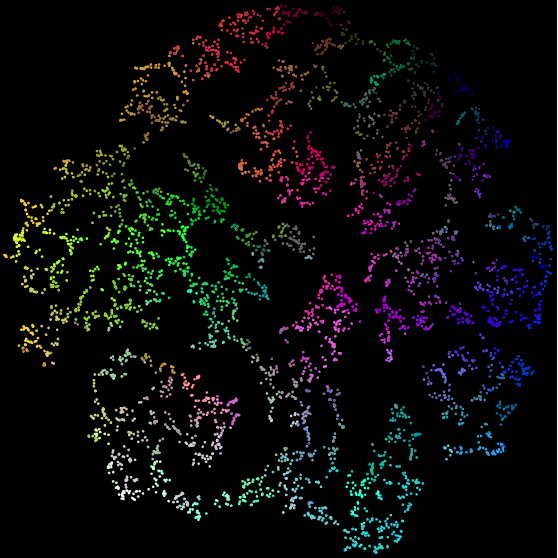This is a fork of the official RasterFairy that has Python 3 support. Since the official repo isn't maintained (there is an unmerged pull request for Python 3 from April, 2017), I made a Python 3 compatible version on my own.
Below is the README from the official RasterFairy repo.
The purpose of Raster Fairy is to transform any kind of 2D point cloud into a regular raster whilst trying to preserve the neighborhood relations that were present in the original cloud. A typical use case is if you have a similarity clustering of images and want to show the images in a regular table structure.
- Python 2.7 (Python 3 is not supported yet)
- numpy > =1.7.1
- scipy - only for coonswarp and rfoptimizer
From the root directory, run:
pip install .
Basic usage:
import rasterfairy
#xy should be a numpy array with a shape (number of points,2)
grid_xy = rasterfairy.transformPointCloud2D(xy)
#grid_xy will contain the points in the same order but aligned to a grid
- Add hexagonal circle grid
- Look into further improving splitting process
- Add Python 3 support
As I learned after publishing there is a very similar earlier developed technique called IsoMatch by O. Fried, S. DiVerdi, M. Halber, E. Sizikova and A. Finkelstein. Unfortunately I was not aware of it during my research and their solution works differently, but you might want to check it out and see if it's better suited to your requirements: IsoMatch Codebase
Another related technique is Kernelized Sorting by Novi Quadrianto, Le Song, Alex J. Smola. from 2009 Kernelized Sorting
Kyle McDonald's CloudToGrid project is a Python-based implementation of the Hungarian method.
If you want to port this algorithm to another language like C++, Javascript or COBOL I'm very happy about it. Only there is a little thing about "porting etiquette" I want to mention - yes, it will take you some work to translate those 500+ lines of code into the language of your choice and you might have to change a few things to make it work. Nevertheless, the algorithm stays the same and yes - I'm probably quite vain here - but I like to read my name. In big letters. Bigger than yours. And don't even think about writing anything like "insipired by". So the proper titling for a port will read something like "Raster Fairy by Mario Klingemann, C++ port by YOU".
